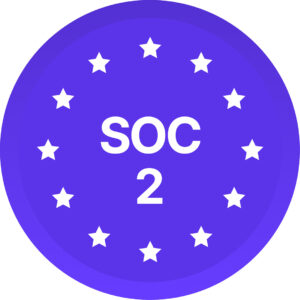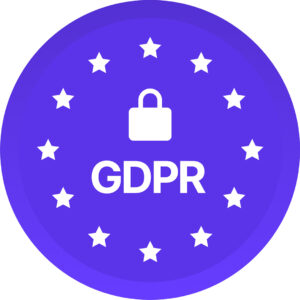Employee recognition is more than just a morale booster – it’s a strategic imperative for cultivating a thriving workplace. Research shows employees who feel valued are 2.7 times more likely to be highly engaged and motivated. Recognition drives increased productivity, reduced turnover, and heightened job satisfaction.
When it comes to diversity, equity, and inclusion (DEI), recognition takes on heightened significance. Properly acknowledging diverse talents nurtures a culture of belonging, empowering all employees to contribute their unique perspectives. An effective recognition program is timely, personalized, and inclusive – moving beyond generic praise to offering meaningful, specific acknowledgment of individual contributions.
Beyond morale: driving innovation and performance
Recognition boosts creativity and problem-solving by making employees feel confident in their abilities. The Harvard Business Review found employees receiving regular recognition are 31% more likely to propose innovative ideas. When individuals are recognized for their contributions, they are more likely to take risks and think outside the box.
It also improves retention rates significantly. Employees who feel appreciated are less likely to leave. According to Gallup, organizations with robust recognition programs experience 22% lower turnover. Recognition builds loyalty and commitment, connecting employees to the company’s mission and values.
Consequences of poor or absent employee recognition
When recognition is lacking or unevenly distributed, morale can plummet, leading to decreased productivity and higher turnover. Employees may feel undervalued and disengaged, stifling innovation and collaboration. Consistently recognizing only a select few breeds resentment and toxicity.
DEI-specific employee recognition: creating a culture of belonging
Recognizing diverse talents is key to fostering true inclusion. DEI-specific programs highlight unique contributions across backgrounds, promoting a culture where everyone feels valued. For example, Google’s “You Rock” peer recognition program tied to core values ensures recognition is comprehensive and inclusive.
Getting it right: implementing effective recognition programs
An inclusive, timely, data-driven recognition program tailored to individual preferences is essential. It should be ingrained in the company culture and supported by data-driven insights to meet all employees’ needs.
One size does not fit all
Different employees value different forms of recognition. For some, public acknowledgment motivates; for others, a private note resonates. Employee feedback data can help tailor approaches for genuine appreciation, ensuring that all employees feel appreciated.
Navigating global differences
In a global workforce, practices must adapt to diverse cultural contexts regarding how recognition is perceived and valued. This having a good understand of each culture and respecting cultural differences in how recognition is perceived and valued. Ensuring global applicability means customizing strategies to local norms and values.
Frequency and timing
Prompt recognition after achievement maximizes relevance and impact. While Delayed acknowledgment can reduce the significance of the achievement. Data-driven platforms like Diversio determine optimal frequency using real-time engagement insights to keep the pulse on employee sentiment.
Recognition in a remote and hybrid work environment
As remote and hybrid work become a norm, adapting recognition is critical. Using virtual tools like digital badges, shout-outs, and online platforms to engage remote employees, can help ensure that remote employees feel valued.
Continuous feedback and Improvement
Ongoing feedback through pulse checks and surveys help organizations make the necessary adjustments to meet evolving needs. Diversio’s customizable surveys provide real-time insights enabling continuous improvement and adaptation, driving innovation, loyalty, and peak performance.
16 employee recognition and appreciation examples:
Employee recognition takes many forms, each should be tailored to make employees feel genuinely valued.
- Personalized thank you notes from managers or peers, handwritten or digital, offer specific praise.
- Public acknowledgment in team meetings, newsletters, or company-wide emails to celebrate achievements.
- Spot bonuses: Offer immediate financial rewards for exceptional performance.
- Gift cards: Give out gift cards to popular stores or online platforms.
- Extra time off: Reward employees with an additional day or flexible hours to demonstrates work-life harmony.
- Professional development opportunities: pay for courses, conferences, or certifications, to invest in employee growth.
- Shout-out boards: Create a physical or digital board where employees can publicly appreciate each other.
- Company swag: Give out branded merchandise such as T-shirts, mugs, or notebooks.
- Customized awards: Provide awards tailored to specific achievements, like “Best Problem Solver” or “Top Innovator.
- Peer-to-peer recognition: Allow employees to recognize each other through a formal system.
- Social media shout-outs: Showcase employee achievements on the company’s social media channels.
- Anniversary celebrations: Celebrate work anniversaries with personalized gifts or acknowledgments.
- Mentorship opportunities: Pair employees with mentors for career growth and development.
- Special recognition days: Dedicate specific days to recognize different departments or roles.
- Recognition platforms: Use digital platforms like Bonusly or Kudos to facilitate regular recognition.
- Cultural celebrations: Acknowledge and celebrate diverse cultural holidays and traditions.
The ROI of employee recognition programs
Tracking the financial impact of recognition focuses on measuring key performance indicators such as turnover rates, employee engagement scores, and productivity levels. Effective recognition programs can lead to increased cost savings by reducing turnover and boosting overall employee performance.
Beyond financial metrics, recognition programs also provide substantial social ROI. Improved employee satisfaction leads to a more positive workplace culture, enhancing collaboration, innovation, and creating a sense of belonging. This, in turn, improves the company’s reputation and attracts top talent.
Summary
The power of recognition in the workplace cannot be overemphasized. Aside from fostering a culture of belonging, it in turn drives innovation, boosts retention, particularly when integrated with DEI initiatives. Data-driven DEI insights, analytics, and benchmarking tools, like those offered by Diversio, provide the necessary information needed to customize and refine recognition programs. Organizations can create a thriving, engaged workforce and achieve strategic advantages that go beyond mere compliance.

